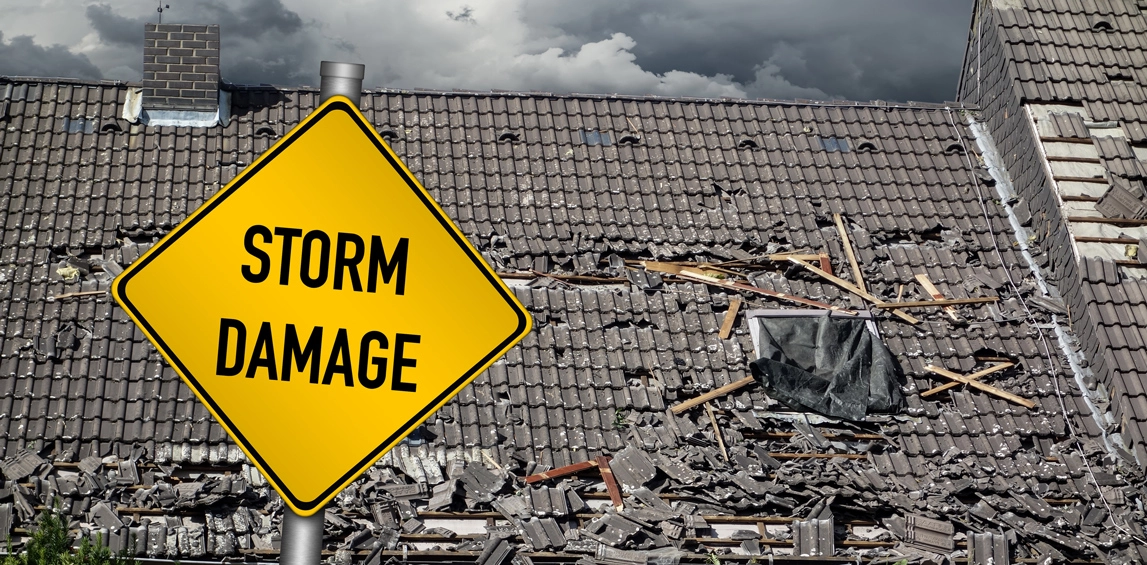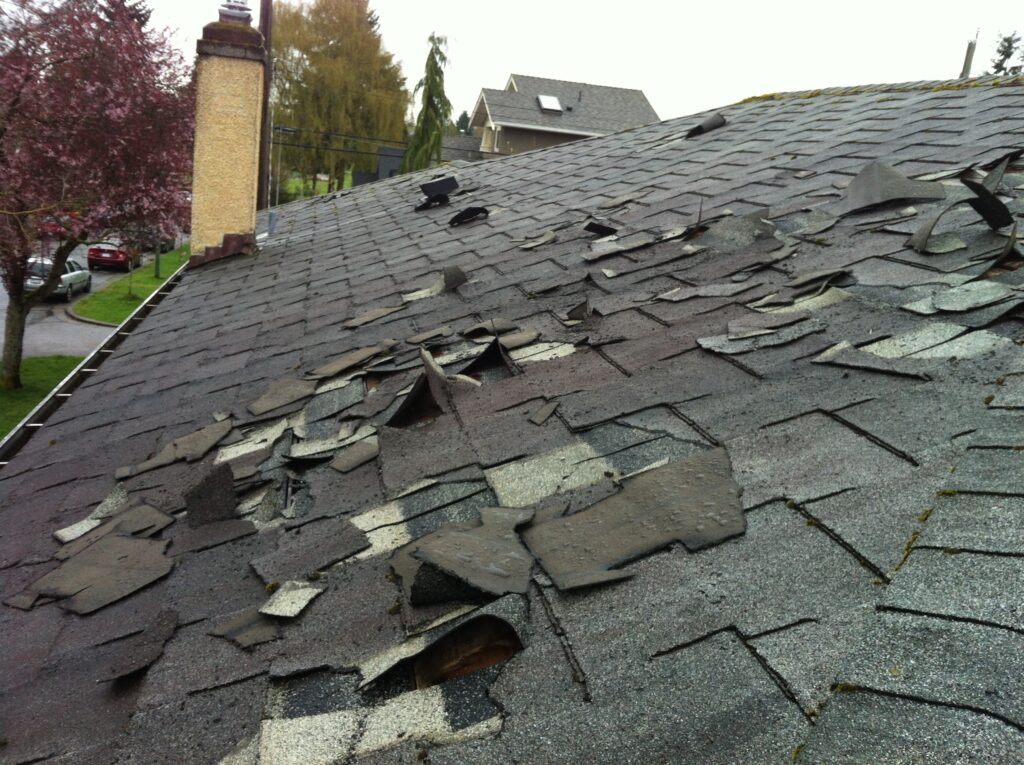Heavy rains, hail, strong winds, massive snowfall, and damage from the sun can cause significant damage to one’s roof. Many areas are at risk of tornadoes and hail storms that can lead to a damaged roof or leaks that can even have an impact on the home’s interior.
What Storm Damage May Look Like
Often, the signs of a damaged roof can be evident such as water spots forming on the ceiling, a curled ceiling, missing or buckling roof shingles. You may also notice impaired or broken roof flashing water issues or wet walls on the home’s exterior or winter ice forming puddles.
What You Should Be Looking For:
- Shingles – Missing shingle is an apparent sign; however, you should also be on the lookout for granule build-up on the shingles and also early signs of damage. Hail storms can cause dents and dings in asphalt shingles.
- Missing Flashing – inspect along the edges of skylights and roof, chimneys, and vents.
- Pealing Or Lose Sealant – usually along the same penetration points.
- Water Damage – usually along the ceiling or in the attic.
In many instances, you may not notice any signs of damage, in which case it is recommended to call a professional roofing company. As recommended by the NRCA (National Roofing Contractors Association), a homeowner must have their roofs inspected by a professional at least twice yearly, before the fall and again in Spring.
Where To Begin The Process Of A Roof Replacement?
Once the damage to your roof is assessed, the next step in a roof replacement is to ask for an estimate. An expert roofing contractor can call a meeting with you and your family to decide on the best roofing materials, from the underlayment to the shingles that will be covering the entire roof system. They can also discuss the financing options, warranty packages, and find out what time would fit your schedule the best to do the new roof installation.
What Is Covered In A Homeowner’s Insurance?
It can be a troubling experience to figure out what exactly is covered and what not in homeowner’s insurance. A roof is typically covered in instances where the damage was caused due to reasons outside of a homeowner’s control. A few examples are vandalism and fire. The policy will generally cover damage as a result of severe weather conditions like tornadoes or hurricanes. Similarly, roof damages sustained from moderate weather conditions like wind, hail, and rain can also be covered under homeowner’s insurance. Once the claim is filed, it’s essential to thoroughly keep a record of any damages that were sustained. Many policies only cover such expenses when submitted through a claim. However, bear in mind that coverage will often be contingent on the area you reside in, the age of the roof, and other factors. The quickest way of finding out precisely what is covered with relation to storm damage is to get in contact with your insurance company and discuss the specifics of your policy, including what is covered and what the relevant deductibles are.



Leave a Reply